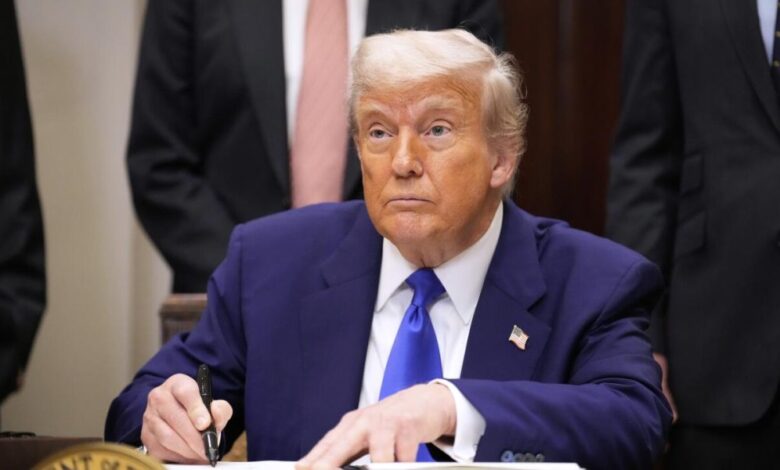JUST IN: Trump Declares U.S. Defense Dept. Now ‘Department of War’

United States President Donald Trump has signed an executive order renaming the Department of Defense as the Department of War, reviving a title last used in 1949.
Trump said the rebranding reflects “America’s strength” and signals a new era of military posture centered on offense rather than defense.
The announcement came on Friday, September 5, inside the Oval Office, where Trump was joined by Defense Secretary Pete Hegseth and Deputy Secretary Steve Feinberg.
Both men were introduced under their new titles Secretary of War and Deputy Secretary of War as the executive order was unveiled.
“It’s a very important change, because it’s an attitude,” Trump said during the ceremony. “It’s really about winning. We are a country that doesn’t just defend itself, we win wars.”
The Pentagon immediately began implementing the directive, including updating signage at its Arlington, Virginia headquarters.
The move represents one of the most symbolic changes to the U.S. military structure in decades, stirring both nostalgia and controversy.
For more than 150 years, the War Department managed the U.S. Army and Navy before the National Security Act of 1947 reorganized the military, creating the Department of Defense.
The name change at that time was intended to highlight America’s commitment to preventing war in the nuclear age rather than projecting aggression.
Trump, however, argued that the old name better suits the current global climate.
Earlier in the week, during a meeting with South Korean President Lee Jae-myung, he hinted at the shift.
“We had an unbelievable history of victory when it was Department of War.
Then we changed it to Department of Defense, and it hasn’t been the same,” Trump remarked.
Secretary Pete Hegseth, a longtime supporter of the rebrand, praised the president’s decision.
“We’re going to go on the offense, not just on defense. Maximum lethality, not tepid legality,” Hegseth declared, promising a more aggressive stance against America’s adversaries.
Deputy Secretary Steve Feinberg also voiced support, stressing that the renaming reflects a stronger, more direct approach to national security.
The announcement has sparked intense debate in Washington and abroad.
Supporters of the move say it restores historical clarity and reflects America’s military dominance.
Critics, however, warn that the change sends an unnecessarily provocative message to allies and rivals, suggesting that the U.S. is more interested in conflict than diplomacy.
Military historians note that the U.S. War Department oversaw some of the nation’s greatest military victories, including both World Wars.
Yet, they caution that reviving the old name risks overshadowing the post–World War II era of collective security and deterrence.
The order takes effect immediately, with the Department of War assuming all responsibilities previously held by the Department of Defense.
Observers say the change could shape America’s global image for years to come, particularly as tensions remain high in regions like Eastern Europe, the South China Sea, and the Middle East.
By restoring the old name, Trump has tied his administration to a legacy of past military triumphs while signaling a harder edge in U.S. foreign policy.
Whether the symbolic shift translates into new strategy or remains a branding exercise will be tested in the months ahead.
Post Views: 1





